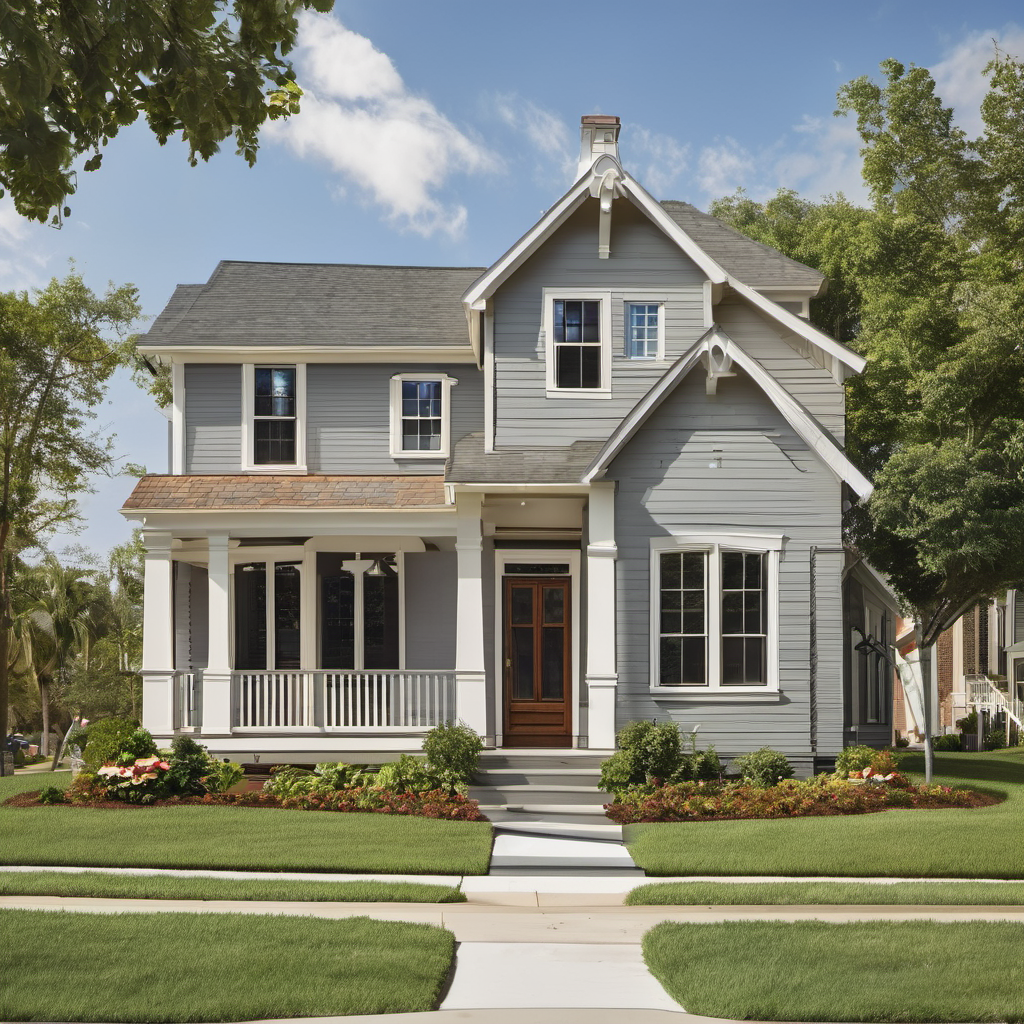[fusion_builder_container type=”flex” hundred_percent=”no” hundred_percent_height=”no” hundred_percent_height_scroll=”no” align_content=”stretch” flex_align_items=”flex-start” flex_justify_content=”flex-start” hundred_percent_height_center_content=”yes” equal_height_columns=”no” container_tag=”div” hide_on_mobile=”small-visibility,medium-visibility,large-visibility” status=”published” border_style=”solid” box_shadow=”no” box_shadow_blur=”0″ box_shadow_spread=”0″ gradient_start_position=”0″ gradient_end_position=”100″ gradient_type=”linear” radial_direction=”center center” linear_angle=”180″ background_position=”center center” background_repeat=”no-repeat” fade=”no” background_parallax=”none” enable_mobile=”no” parallax_speed=”0.3″ background_blend_mode=”none” video_aspect_ratio=”16:9″ video_loop=”yes” video_mute=”yes” pattern_bg=”none” pattern_bg_style=”default” pattern_bg_opacity=”100″ pattern_bg_blend_mode=”normal” mask_bg=”none” mask_bg_style=”default” mask_bg_opacity=”100″ mask_bg_transform=”left” mask_bg_blend_mode=”normal” absolute=”off” absolute_devices=”small,medium,large” sticky=”off” sticky_devices=”small-visibility,medium-visibility,large-visibility” sticky_transition_offset=”0″ scroll_offset=”0″ animation_direction=”left” animation_speed=”0.3″ animation_delay=”0″ filter_hue=”0″ filter_saturation=”100″ filter_brightness=”100″ filter_contrast=”100″ filter_invert=”0″ filter_sepia=”0″ filter_opacity=”100″ filter_blur=”0″ filter_hue_hover=”0″ filter_saturation_hover=”100″ filter_brightness_hover=”100″ filter_contrast_hover=”100″ filter_invert_hover=”0″ filter_sepia_hover=”0″ filter_opacity_hover=”100″ filter_blur_hover=”0″ admin_label=”Post Content”][fusion_builder_row][fusion_builder_column type=”1_1″ layout=”1_1″ align_self=”auto” content_layout=”column” align_content=”flex-start” valign_content=”flex-start” content_wrap=”wrap” center_content=”no” column_tag=”div” target=”_self” hide_on_mobile=”small-visibility,medium-visibility,large-visibility” sticky_display=”normal,sticky” order_medium=”0″ order_small=”0″ hover_type=”none” border_style=”solid” box_shadow=”no” box_shadow_blur=”0″ box_shadow_spread=”0″ z_index_subgroup=”regular” background_type=”single” gradient_start_position=”0″ gradient_end_position=”100″ gradient_type=”linear” radial_direction=”center center” linear_angle=”180″ lazy_load=”none” background_position=”left top” background_repeat=”no-repeat” background_blend_mode=”none” sticky=”off” sticky_devices=”small-visibility,medium-visibility,large-visibility” absolute=”off” filter_type=”regular” filter_hover_element=”self” filter_hue=”0″ filter_saturation=”100″ filter_brightness=”100″ filter_contrast=”100″ filter_invert=”0″ filter_sepia=”0″ filter_opacity=”100″ filter_blur=”0″ filter_hue_hover=”0″ filter_saturation_hover=”100″ filter_brightness_hover=”100″ filter_contrast_hover=”100″ filter_invert_hover=”0″ filter_sepia_hover=”0″ filter_opacity_hover=”100″ filter_blur_hover=”0″ transform_type=”regular” transform_hover_element=”self” transform_scale_x=”1″ transform_scale_y=”1″ transform_translate_x=”0″ transform_translate_y=”0″ transform_rotate=”0″ transform_skew_x=”0″ transform_skew_y=”0″ transform_scale_x_hover=”1″ transform_scale_y_hover=”1″ transform_translate_x_hover=”0″ transform_translate_y_hover=”0″ transform_rotate_hover=”0″ transform_skew_x_hover=”0″ transform_skew_y_hover=”0″ transition_duration=”300″ transition_easing=”ease” animation_direction=”left” animation_speed=”0.3″ animation_delay=”0″ last=”true” border_position=”all” min_height=”” link=”” first=”true”][fusion_title title_type=”text” marquee_direction=”left” marquee_speed=”15000″ rotation_effect=”bounceIn” display_time=”1200″ highlight_effect=”circle” loop_animation=”off” highlight_width=”9″ highlight_top_margin=”0″ before_text=”” rotation_text=”” highlight_text=”” after_text=”” title_link=”off” link_url=”” link_target=”_self” hide_on_mobile=”small-visibility,medium-visibility,large-visibility” sticky_display=”normal,sticky” class=”” id=”” content_align_medium=”” content_align_small=”” content_align=”left” size=”4″ animated_font_size=”” fusion_font_family_title_font=”” fusion_font_variant_title_font=”” font_size=”” line_height=”” letter_spacing=”” text_transform=”” text_color=”” hue=”” saturation=”” lightness=”” alpha=”” animated_text_color=”” text_shadow=”no” text_shadow_vertical=”” text_shadow_horizontal=”” text_shadow_blur=”0″ text_shadow_color=”” text_stroke=”no” text_stroke_size=”1″ text_stroke_color=”” text_overflow=”none” margin_top_medium=”” margin_right_medium=”” margin_bottom_medium=”” margin_left_medium=”” margin_top_small=”” margin_right_small=”” margin_bottom_small=”” margin_left_small=”” margin_top=”” margin_right=”” margin_bottom=”” margin_left=”” margin_top_mobile=”” margin_bottom_mobile=”” gradient_font=”no” gradient_start_color=”” gradient_end_color=”” gradient_start_position=”0″ gradient_end_position=”100″ gradient_type=”linear” radial_direction=”center center” linear_angle=”180″ highlight_color=”” style_type=”default” sep_color=”” link_color=”” link_hover_color=”” animation_type=”” animation_direction=”left” animation_color=”” animation_speed=”0.3″ animation_delay=”0″ animation_offset=””]
Home Mortgage Key Components
[/fusion_title][fusion_text columns=”” column_min_width=”” column_spacing=”” rule_style=”” rule_size=”” rule_color=”” hue=”” saturation=”” lightness=”” alpha=”” content_alignment_medium=”” content_alignment_small=”” content_alignment=”” hide_on_mobile=”small-visibility,medium-visibility,large-visibility” sticky_display=”normal,sticky” class=”” id=”” margin_top=”” margin_right=”” margin_bottom=”” margin_left=”” fusion_font_family_text_font=”” fusion_font_variant_text_font=”” font_size=”” line_height=”” letter_spacing=”” text_transform=”” text_color=”” animation_type=”” animation_direction=”left” animation_color=”” animation_speed=”0.3″ animation_delay=”0″ animation_offset=”” logics=””]
[/fusion_text][fusion_builder_row_inner][fusion_builder_column_inner type=”10.00″ layout=”10.00″ align_self=”auto” content_layout=”column” align_content=”flex-start” valign_content=”flex-start” content_wrap=”wrap” center_content=”no” column_tag=”div” target=”_self” hide_on_mobile=”small-visibility,medium-visibility,large-visibility” sticky_display=”normal,sticky” order_medium=”0″ order_small=”0″ hover_type=”none” border_style=”solid” box_shadow=”no” box_shadow_blur=”0″ box_shadow_spread=”0″ z_index_subgroup=”regular” background_type=”single” gradient_start_position=”0″ gradient_end_position=”100″ gradient_type=”linear” radial_direction=”center center” linear_angle=”180″ lazy_load=”none” background_position=”left top” background_repeat=”no-repeat” background_blend_mode=”none” sticky=”off” sticky_devices=”small-visibility,medium-visibility,large-visibility” absolute=”off” filter_type=”regular” filter_hover_element=”self” filter_hue=”0″ filter_saturation=”100″ filter_brightness=”100″ filter_contrast=”100″ filter_invert=”0″ filter_sepia=”0″ filter_opacity=”100″ filter_blur=”0″ filter_hue_hover=”0″ filter_saturation_hover=”100″ filter_brightness_hover=”100″ filter_contrast_hover=”100″ filter_invert_hover=”0″ filter_sepia_hover=”0″ filter_opacity_hover=”100″ filter_blur_hover=”0″ transform_type=”regular” transform_hover_element=”self” transform_scale_x=”1″ transform_scale_y=”1″ transform_translate_x=”0″ transform_translate_y=”0″ transform_rotate=”0″ transform_skew_x=”0″ transform_skew_y=”0″ transform_scale_x_hover=”1″ transform_scale_y_hover=”1″ transform_translate_x_hover=”0″ transform_translate_y_hover=”0″ transform_rotate_hover=”0″ transform_skew_x_hover=”0″ transform_skew_y_hover=”0″ transition_duration=”300″ transition_easing=”ease” animation_direction=”left” animation_speed=”0.3″ animation_delay=”0″ last=”false” border_position=”all” element_content=”” min_height=”” link=”” first=”true”][/fusion_builder_column_inner][fusion_builder_column_inner type=”4_5″ layout=”4_5″ align_self=”auto” content_layout=”column” align_content=”flex-start” valign_content=”flex-start” content_wrap=”wrap” center_content=”no” column_tag=”div” target=”_self” hide_on_mobile=”small-visibility,medium-visibility,large-visibility” sticky_display=”normal,sticky” order_medium=”0″ order_small=”0″ hover_type=”none” border_style=”solid” box_shadow=”no” box_shadow_blur=”0″ box_shadow_spread=”0″ z_index_subgroup=”regular” background_type=”single” gradient_start_position=”0″ gradient_end_position=”100″ gradient_type=”linear” radial_direction=”center center” linear_angle=”180″ lazy_load=”none” background_position=”left top” background_repeat=”no-repeat” background_blend_mode=”none” sticky=”off” sticky_devices=”small-visibility,medium-visibility,large-visibility” absolute=”off” filter_type=”regular” filter_hover_element=”self” filter_hue=”0″ filter_saturation=”100″ filter_brightness=”100″ filter_contrast=”100″ filter_invert=”0″ filter_sepia=”0″ filter_opacity=”100″ filter_blur=”0″ filter_hue_hover=”0″ filter_saturation_hover=”100″ filter_brightness_hover=”100″ filter_contrast_hover=”100″ filter_invert_hover=”0″ filter_sepia_hover=”0″ filter_opacity_hover=”100″ filter_blur_hover=”0″ transform_type=”regular” transform_hover_element=”self” transform_scale_x=”1″ transform_scale_y=”1″ transform_translate_x=”0″ transform_translate_y=”0″ transform_rotate=”0″ transform_skew_x=”0″ transform_skew_y=”0″ transform_scale_x_hover=”1″ transform_scale_y_hover=”1″ transform_translate_x_hover=”0″ transform_translate_y_hover=”0″ transform_rotate_hover=”0″ transform_skew_x_hover=”0″ transform_skew_y_hover=”0″ transition_duration=”300″ transition_easing=”ease” animation_direction=”left” animation_speed=”0.3″ animation_delay=”0″ background_color=”hsla(var(–awb-color2-h),var(–awb-color2-s),calc(var(–awb-color2-l) + 2%),var(–awb-color2-a))” padding_top=”50px” padding_right=”50px” padding_bottom=”50px” padding_left=”50px” border_sizes_left=”5px” border_color=”var(–awb-color4)” last=”false” border_position=”all” min_height=”” link=”” first=”false”][fusion_text columns=”” column_min_width=”” column_spacing=”” rule_style=”” rule_size=”” rule_color=”” hue=”” saturation=”” lightness=”” alpha=”” content_alignment_medium=”” content_alignment_small=”” content_alignment=”” hide_on_mobile=”small-visibility,medium-visibility,large-visibility” sticky_display=”normal,sticky” class=”” id=”” margin_top=”” margin_right=”” margin_bottom=”0px” margin_left=”” fusion_font_family_text_font=”” fusion_font_variant_text_font=”” font_size=”” line_height=”” letter_spacing=”” text_transform=”” text_color=”” animation_type=”” animation_direction=”left” animation_color=”” animation_speed=”0.3″ animation_delay=”0″ animation_offset=”” logics=””]
There are various types of mortgages available to homebuyers, including conventional loans, FHA loans, VA loans, and USDA loans. Each type of mortgage has its own eligibility requirements, terms, and conditions.
[/fusion_text][/fusion_builder_column_inner][fusion_builder_column_inner type=”10.00″ layout=”10.00″ align_self=”auto” content_layout=”column” align_content=”flex-start” valign_content=”flex-start” content_wrap=”wrap” center_content=”no” column_tag=”div” target=”_self” hide_on_mobile=”small-visibility,medium-visibility,large-visibility” sticky_display=”normal,sticky” order_medium=”0″ order_small=”0″ hover_type=”none” border_style=”solid” box_shadow=”no” box_shadow_blur=”0″ box_shadow_spread=”0″ z_index_subgroup=”regular” background_type=”single” gradient_start_position=”0″ gradient_end_position=”100″ gradient_type=”linear” radial_direction=”center center” linear_angle=”180″ lazy_load=”none” background_position=”left top” background_repeat=”no-repeat” background_blend_mode=”none” sticky=”off” sticky_devices=”small-visibility,medium-visibility,large-visibility” absolute=”off” filter_type=”regular” filter_hover_element=”self” filter_hue=”0″ filter_saturation=”100″ filter_brightness=”100″ filter_contrast=”100″ filter_invert=”0″ filter_sepia=”0″ filter_opacity=”100″ filter_blur=”0″ filter_hue_hover=”0″ filter_saturation_hover=”100″ filter_brightness_hover=”100″ filter_contrast_hover=”100″ filter_invert_hover=”0″ filter_sepia_hover=”0″ filter_opacity_hover=”100″ filter_blur_hover=”0″ transform_type=”regular” transform_hover_element=”self” transform_scale_x=”1″ transform_scale_y=”1″ transform_translate_x=”0″ transform_translate_y=”0″ transform_rotate=”0″ transform_skew_x=”0″ transform_skew_y=”0″ transform_scale_x_hover=”1″ transform_scale_y_hover=”1″ transform_translate_x_hover=”0″ transform_translate_y_hover=”0″ transform_rotate_hover=”0″ transform_skew_x_hover=”0″ transform_skew_y_hover=”0″ transition_duration=”300″ transition_easing=”ease” animation_direction=”left” animation_speed=”0.3″ animation_delay=”0″ last=”true” border_position=”all” element_content=”” min_height=”” link=”” first=”false”][/fusion_builder_column_inner][/fusion_builder_row_inner][fusion_title title_type=”text” marquee_direction=”left” marquee_speed=”15000″ rotation_effect=”bounceIn” display_time=”1200″ highlight_effect=”circle” loop_animation=”off” highlight_width=”9″ highlight_top_margin=”0″ before_text=”” rotation_text=”” highlight_text=”” after_text=”” title_link=”off” link_url=”” link_target=”_self” hide_on_mobile=”small-visibility,medium-visibility,large-visibility” sticky_display=”normal,sticky” class=”” id=”” content_align_medium=”” content_align_small=”” content_align=”left” size=”4″ animated_font_size=”” fusion_font_family_title_font=”” fusion_font_variant_title_font=”” font_size=”” line_height=”” letter_spacing=”” text_transform=”” text_color=”” hue=”” saturation=”” lightness=”” alpha=”” animated_text_color=”” text_shadow=”no” text_shadow_vertical=”” text_shadow_horizontal=”” text_shadow_blur=”0″ text_shadow_color=”” text_stroke=”no” text_stroke_size=”1″ text_stroke_color=”” text_overflow=”none” margin_top_medium=”” margin_right_medium=”” margin_bottom_medium=”” margin_left_medium=”” margin_top_small=”50px” margin_right_small=”” margin_bottom_small=”” margin_left_small=”” margin_top=”60px” margin_right=”” margin_bottom=”” margin_left=”” margin_top_mobile=”” margin_bottom_mobile=”” gradient_font=”no” gradient_start_color=”” gradient_end_color=”” gradient_start_position=”0″ gradient_end_position=”100″ gradient_type=”linear” radial_direction=”center center” linear_angle=”180″ highlight_color=”” style_type=”default” sep_color=”” link_color=”” link_hover_color=”” animation_type=”” animation_direction=”left” animation_color=”” animation_speed=”0.3″ animation_delay=”0″ animation_offset=””]
Types of Mortgages
[/fusion_title][fusion_text columns=”” column_min_width=”” column_spacing=”” rule_style=”” rule_size=”” rule_color=”” hue=”” saturation=”” lightness=”” alpha=”” content_alignment_medium=”” content_alignment_small=”” content_alignment=”” hide_on_mobile=”small-visibility,medium-visibility,large-visibility” sticky_display=”normal,sticky” class=”” id=”” margin_top=”” margin_right=”” margin_bottom=”” margin_left=”” fusion_font_family_text_font=”” fusion_font_variant_text_font=”” font_size=”” line_height=”” letter_spacing=”” text_transform=”” text_color=”” animation_type=”” animation_direction=”left” animation_color=”” animation_speed=”0.3″ animation_delay=”0″ animation_offset=”” logics=””]
Let’s delve into the details of each type of loan:
Conventional Loans:
Definition: Conventional loans are mortgage loans that are not guaranteed or insured by any government agency, such as the Federal Housing Administration (FHA), the Department of Veterans Affairs (VA), or the U.S. Department of Agriculture (USDA). Instead, they are offered by private lenders such as banks, credit unions, and mortgage companies.
Eligibility Criteria: Borrowers typically need to have a good credit score (usually above 620), a stable income, and a low debt-to-income ratio to qualify for a conventional loan. The down payment requirements for conventional loans can vary but generally range from 3% to 20% of the home’s purchase price.
Features:
Fixed-Rate and Adjustable-Rate Options: Conventional loans offer both fixed-rate and adjustable-rate mortgage (ARM) options. With a fixed-rate mortgage, the interest rate remains constant throughout the loan term, providing predictable monthly payments. With an ARM, the interest rate may fluctuate after an initial fixed period, which can result in changes to the monthly payment amount.
Private Mortgage Insurance (PMI):
Borrowers who make a down payment of less than 20% typically need to pay for private mortgage insurance (PMI) to protect the lender in case of default. Once the borrower’s equity in the home reaches 20%, PMI can usually be cancelled.
Loan Limits: Conventional loans have maximum loan limits set by the Federal Housing Finance Agency (FHFA), which can vary depending on the location of the property.
Advantages:
Conventional loans offer flexibility in terms of loan terms, down payment options, and property types.
Borrowers with strong credit profiles may qualify for lower interest rates compared to government-backed loans.
Disadvantages:
Stricter eligibility criteria compared to government-backed loans, making it harder for some borrowers to qualify.
Down payment requirements can be higher, especially for borrowers who do not have excellent credit.
FHA Loans:
Definition: FHA loans are mortgage loans insured by the Federal Housing Administration, a government agency within the U.S. Department of Housing and Urban Development (HUD). These loans are designed to make homeownership more accessible to low-to-moderate income borrowers who may have lower credit scores or limited funds for a down payment.
Eligibility Criteria: FHA loans have less stringent credit and income requirements compared to conventional loans. Borrowers with credit scores as low as 500 may qualify for an FHA loan with a 10% down payment, while borrowers with a credit score of 580 or higher may be eligible for a loan with a down payment as low as 3.5%.
Features:
Mortgage Insurance Premium (MIP): FHA loans require borrowers to pay both an upfront mortgage insurance premium (UFMIP) at closing and an annual mortgage insurance premium (MIP) as part of their monthly mortgage payments. This insurance protects the lender in case the borrower defaults on the loan.
Flexible Qualification Standards: FHA loans are known for their lenient qualification standards, which can be beneficial for first-time homebuyers or borrowers with less-than-perfect credit.
Loan Limits: FHA loan limits vary by county and are based on median home prices in the area.
Advantages:
Lower down payment requirements compared to conventional loans, making homeownership more accessible to a broader range of borrowers.
Flexible credit requirements may allow borrowers with less-than-perfect credit to qualify for financing.
Disadvantages:
Borrowers are required to pay mortgage insurance premiums for the life of the loan if the down payment is less than 10%.
FHA loans may have stricter property requirements, such as the need for the property to meet certain safety and habitability standards.
VA Loans:
Definition: VA loans are mortgage loans guaranteed by the U.S. Department of Veterans Affairs and are available to eligible active-duty service members, veterans, and certain surviving spouses. These loans are designed to help military personnel and their families achieve homeownership with favorable terms and conditions.
Eligibility Criteria: To qualify for a VA loan, borrowers must meet certain service requirements, including minimum periods of active duty service or National Guard/Reserve service. Generally, veterans with honorable discharges are eligible, along with active-duty service members who have served for a minimum period. Spouses of service members who died in the line of duty or as a result of a service-connected disability may also be eligible.
Features:
No Down Payment: One of the most significant benefits of VA loans is that eligible borrowers can finance up to 100% of the home’s purchase price without a down payment.
No Mortgage Insurance: VA loans do not require borrowers to pay private mortgage insurance (PMI), which can result in lower monthly payments compared to conventional and FHA loans.
Interest Rate Reduction Refinance Loan (IRRRL): Also known as the VA streamline refinance, this program allows eligible borrowers to refinance their existing VA loan to obtain a lower interest rate and reduce their monthly payments with minimal paperwork and underwriting requirements.
Advantages:
No down payment requirement makes homeownership more attainable for eligible veterans and active-duty service members.
Competitive interest rates and lenient credit requirements.
Disadvantages:
VA loans may have funding fees, which are one-time fees charged by the VA to help offset the cost of the loan guarantee.
Borrowers must obtain a Certificate of Eligibility (COE) from the VA to prove their eligibility for a VA loan.
USDA Loans:
Definition: USDA loans are mortgage loans guaranteed by the U.S. Department of Agriculture and are designed to help low-to-moderate income borrowers in rural and suburban areas achieve homeownership. These loans are available through the USDA’s Rural Development program.
Eligibility Criteria: To qualify for a USDA loan, borrowers must meet income eligibility requirements based on the median income for the area where the property is located. Additionally, the property must be located in an eligible rural or suburban area as defined by the USDA.
Features:
No Down Payment: Similar to VA loans, USDA loans offer 100% financing, allowing eligible borrowers to purchase a home without a down payment.
Income Limits: USDA loans have income limits based on the median household income for the area, which vary depending on the size of the household and location.
Property Eligibility: The property being financed with a USDA loan must meet certain eligibility criteria, including location in an eligible rural or suburban area and compliance with USDA property standards.
Advantages:
No down payment requirement makes homeownership more accessible for low-to-moderate income borrowers in eligible rural and suburban areas.
Competitive interest rates and flexible credit requirements.
Disadvantages:
Borrowers may be subject to upfront and annual guarantee fees, which help fund the USDA loan program.
Property location restrictions may limit eligible properties in certain areas.
[/fusion_text][/fusion_builder_column][/fusion_builder_row][/fusion_builder_container]


